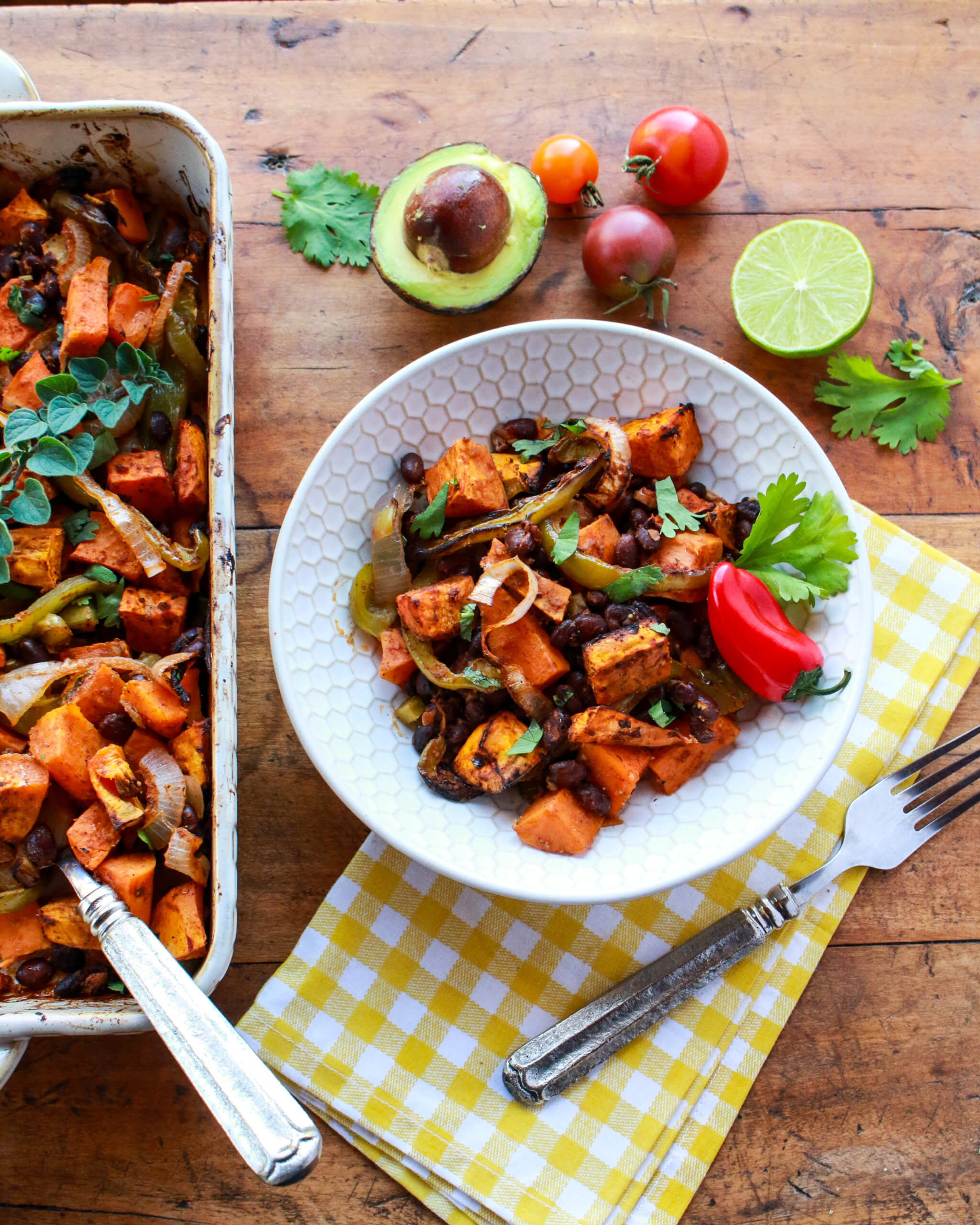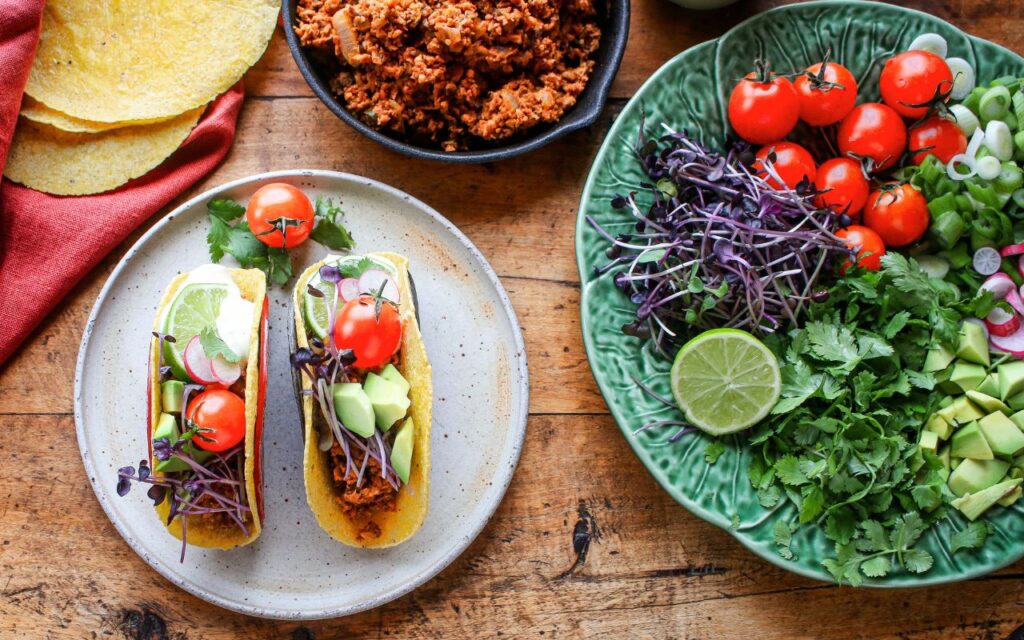The meals you eat day-after-day make a big effect in your well being, in addition to the well being of the planet. I’m answering your prime questions on how your decisions can help meals sustainability on this Ask Sharon weblog right now.

Selecting meals which can be extra environmentally pleasant is a prime client development. Surveys have proven that 59% of shoppers contemplate sustainability after they make meals decisions. Certainly, the meals system makes important impacts on the planet, together with fossil gas consumption, carbon emissions, air pollution, eutrophication, land utilization, and water utilization. And the alternatives you make 3 times a day can considerably influence your environmental footprint. However how do you prioritize meals sustainability together with your meals {dollars}? Immediately, I’m answering your prime diet questions on how to decide on sustainable meals day-after-day. Try Meals + Planet, the nonprofit group I co-founded to study extra about meals sustainability, and skim this weblog on decreasing your environmental footprint via weight loss plan.
Query: How Can I Make Selections That Assist Meals Sustainability?
Sharon’s Reply:
Making extra sustainable meals decisions is a crucial objective. One of the crucial highly effective issues you are able to do to minimize your influence on the planet is to vary your consuming model. Up to now fifty years, the meals system has modified vastly, as farms have gotten greater and extra specialised, utilizing extra chemical substances and fossil fuels to supply meals, and leading to higher lack of biodiversity and wildlife, in addition to higher adverse impacts on soil, water, and air. Try this interview on how trendy agriculture has modified. Listed here are a couple of of my ideas for making extra sustainable meals decisions within the grocery store aisle, plus a few of my favourite planet-friendly recipes.

1. Keep away from Extremely Processed Meals
If a meals product has been via many steps in manufacturing, with plenty of components coming from all corners of the world, the carbon footprint is larger for that product, on account of touring, manufacturing, and distribution. Assume a diet bar with an extended checklist of components vs. a handful of nuts, which got here from one supply with minimal processing.

2. Select Nutritious Meals
Nutrient-rich meals are extra sustainable as a result of they use sources—water, farm inputs, soil—correctly to supply meals that contribute to good well being. These meals embody entire grains, greens, fruit, pulses (beans, lentils, peas), nuts, and seeds. Nonetheless, utilizing these treasured sources to supply meals with poor dietary high quality isn’t sustainable (i.e., sugary soda, chips, sweet), since you squander sources that might have been used to supply meals that nourish the physique. Moreover, these low nutrient meals are linked with well being dangers.

3. Steadiness Energy.
This is likely one of the most severe sustainability points, as a result of producing meals to be consumed in extra of the energy we’d like wastes sources. America produces much more energy in our meals provide than we’d like for every day subsistence. On the similar time about 13% of Individuals are meals insecure, and about 13% of Individuals dwell in meals deserts, the place healthful meals usually are not out there. Being conscious of our meals consumption is a crucial step in direction of making higher decisions.

4. Keep away from Buying Recent Meals Out of Season
Meals that journey lengthy distances usually are not usually sustainable. While you buy fruits within the winter from far-off international locations which can be flown in by air, the environmental influence is excessive. Nonetheless, needless to say some locations are extra environment friendly at rising issues even when they’re a bit farther away. For instance, California’s local weather could make some produce a extra sustainable choice than shopping for produce that was grown in a heated greenhouse in chilly areas. Your greatest guess is to observe the seasons in your meals decisions and eat extra regionally.

5. Use Preserved Meals within the Off Season
Preserved meals which can be evenly processed, comparable to canned, dried, and frozen, are extra sustainable choices throughout the off season, in comparison with produce that’s grown in heated greenhouses or shipped in from far-off locations (air transport is the worst). Preservation of meals is a observe that people have been following via the eons as a way of survival.

6. Contemplate Natural Meals
Natural meals laws considerably restrict the artificial pesticides that can be utilized in crop manufacturing, and so they help extra sustainable soil practices, comparable to the usage of cowl crops, composting, and manures. For those who can afford natural meals purchases—particularly for produce—you could wish to prioritize it. Study extra about natural meals right here.

7. Scale back Meals Packaging
The packages (cereal packing containers, clam shells, particular person cups) could make a huge effect on sustainability, as packaging fills up landfills. Choose minimally processed entire meals with little packaging as your greatest guess. In any case, a banana and a candy potato have pure packaging.

8. Trim Meals Waste
This can be a important think about sustainability, as a result of about 40% of all meals produced within the U.S. is rarely eaten. Sadly, we use huge sources—soil, water, fossil fuels, crop inputs—to supply meals that’s by no means eaten. Meals waste primarily happens on the client degree, the place folks could make a distinction. Study extra about the right way to trim meals waste right here.

9. Restrict Your Variety of Meals Buying Journeys
Research present that touring to purchase groceries could also be very impactful within the whole variety of miles meals journey to get to your plate. So strive limiting the variety of journeys you make, and condense your meals journey journeys to reap the benefits of your location. For instance, if you happen to’re headed to the farmers market, do your entire food-related journeys in that close by location for the week. And do not forget that meals miles—the variety of miles meals travels to get to your plate—is a crucial a part of sustainability, however the manufacturing of meals has a probably bigger influence on sustainability.

10. Scale back Meat Consumption
Analysis persistently exhibits that animal meals—particularly crimson meat and dairy—have a a lot bigger carbon and water footprint than plant meals do. That’s as a result of in todays’ trendy agriculture, we develop crops to feed to animals, that are inefficient convertors of crops into meals. We may reduce out the intermediary (animals) and eat these crops instantly. As well as, ruminants produce a considerable amount of methane throughout their lifetimes. Individuals who eat utterly plant-based diets can have nearly half the carbon footprint of omnivores. Study extra about the right way to eat a extra plant-based weight loss plan right here.

11. Develop A few of Your Personal Meals
One of the crucial sustainable issues you could possibly ever do is to start out a backyard—even beginning with one pot in your patio. No meals miles, no packaging, no fossil fuels, plus the enjoyment of spending time within the soil with dwelling respiration crops underneath the fantastic solar. What may very well be extra sustainable than that? Try my free residence gardening toolkit right here.
Try the opposite diet questions I’m answering at The Plant-Powered Dietitian:
Ask Sharon: Is Oat Milk Good for You?
Is Fats Good For You?
What Are the Variations in Plant-Primarily based Varieties of Diets?
Learn how to Get Full Protein in a Plant-Primarily based Weight loss plan?
Does Roasting Greens Damage Vitamins?
Why Do Beans Trigger Fuel?
What to Put in a Salad To Make it Wholesome?
Extra Instruments for Consuming and Residing the Goodness